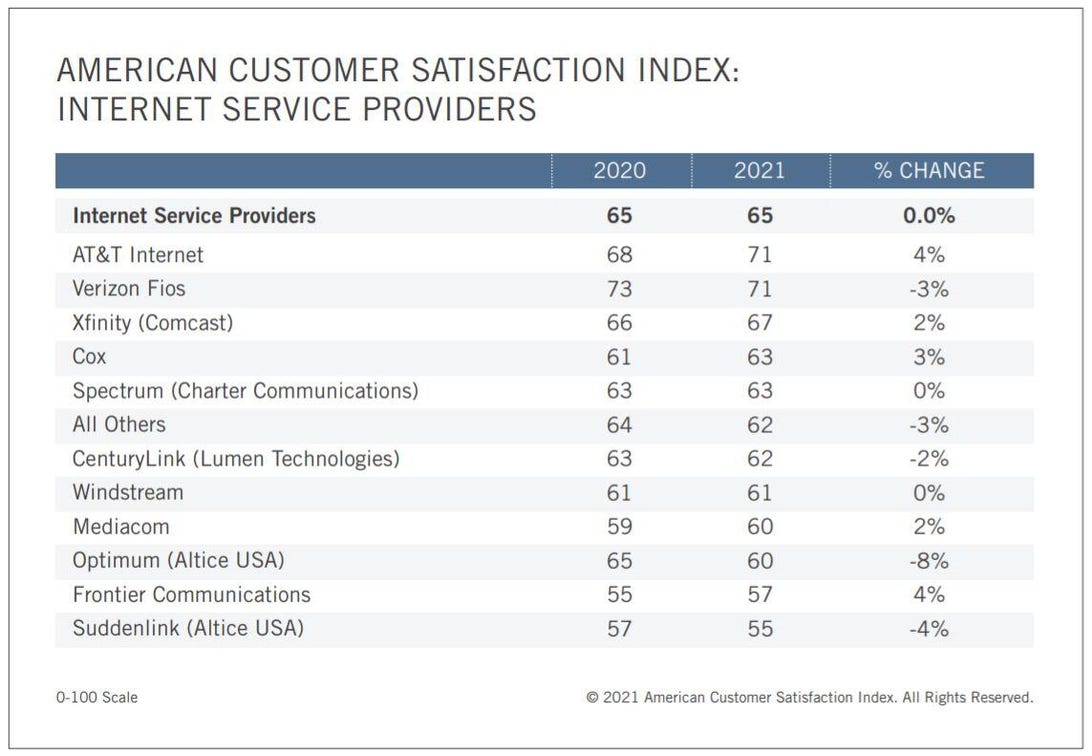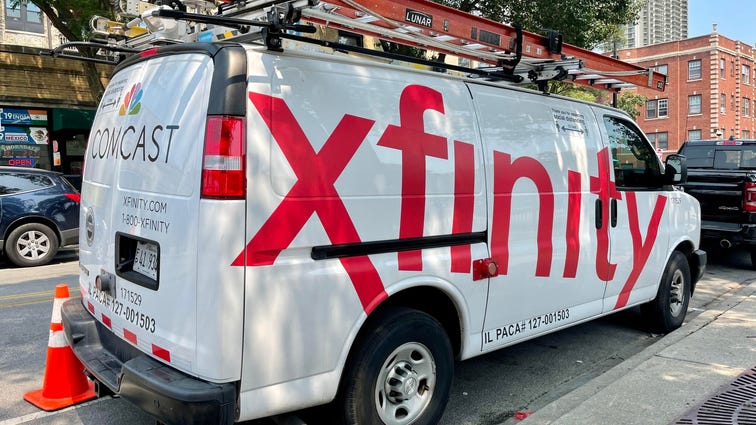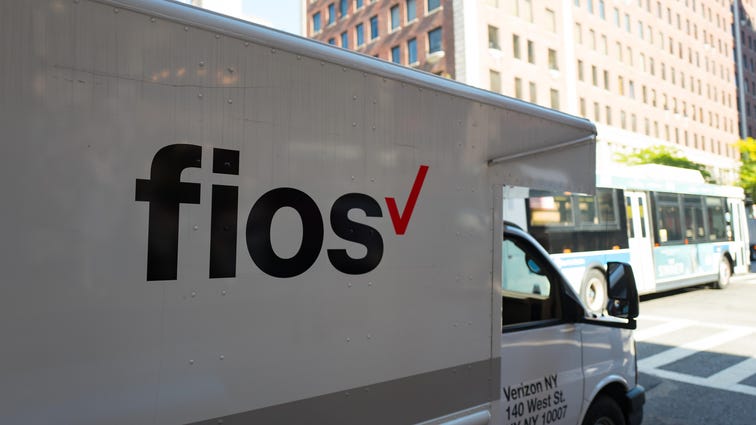
A good home internet plan is borderline essential these days, so if you're shopping around for a new one, you've got a lot to think about. Beyond understanding how the different technologies at play might affect your network performance and determining how much speed you actually need, you might consider looking into the available discounts for low-income households or bundling your home internet with other services.
Outside of that, you'll want some familiarity with the internet service providers competing for your business, too. Among them, two of the largest are Comcast Xfinity, which is available to roughly one-third of American households, and Verizon Fios, available to a little over one-sixth of the country. If you live in the Northeast, you might even have access to both.
If that's the case, you've come to the right post. Below, we'll take a look at how the two providers stack up, from speeds and price tiers to coverage maps and customer satisfaction.
Verizon Fios vs. Xfinity: Technology and speeds
From fiber to satellite, dial-up to DSL, there are lots of different ways for ISPs to get internet connectivity into people's homes. While a lot of internet providers employ a mix of methods as needed to get as many people online as possible, most focus on one main technology for a majority of customers. For instance, Comcast's Xfinity internet service specializes in cable internet, which carries your web traffic along the same copper coaxial wiring that delivers cable TV into people's homes. That's no surprise -- along with being an internet juggernaut, Comcast is one of the biggest cable TV providers in the US.
According to the Federal Communications Commission's most recent data (an admittedly flawed and outdated database, even according to FCC commissioners), cable internet accounts for 99.98% of Xfinity's subscriber footprint, with download speeds of up to 1,000 megabits per second (1 gigabit) available to about 97% of those customers. Comcast notes that those figures are from December 2020, and adds that speeds and availability percentages are both a little higher these days.
"As of January 2021, Comcast upgraded its Xfinity Gigabit Internet speed to provide 1.2Gbps (1,200Mbps) in its Northeast Division," a Comcast spokesperson told us earlier this year. "The company will roll out this speed increase across the rest of its footprint throughout 2021. Xfinity Gigabit Internet is available to 99-plus% of its footprint."
Per the FCC, faster fiber hookups account for the other 0.02% of Xfinity subscribers, though Comcast says that this number is on the rise, as well. In November, the company announced top speeds as high as 3Gbps for customers across the nation, fast enough to qualify as the fastest residential internet plans in the country.
Upload speeds are another story
While Xfinity offers fast downloads, upload speeds with those 1.2Gbps cable plans typically top out at around 35Mbps, which is roughly the bare minimum for HD video conferencing. Lower-tier plans offer even less. For instance, if you subscribe to Xfinity's Blast plan with download speeds of 300Mbps, your accompanying upload speeds will be capped at just 10Mbps. And no, Comcast isn't close to clear about this shortcoming on its website, or in any of its advertising for Xfinity service.
Faster upload speeds do seem to be in the works, but it's unclear when a majority of Xfinity customers should expect to benefit from them.
"Over the years, we have consistently increased both upstream and downstream speeds," a Comcast spokesperson says, while also pointing to an in-house report showing that downstream traffic was roughly 14 times higher than upstream traffic in 2020.
"We continue to evaluate usage, but nothing to announce about increases to our upstream speeds at this time," the spokesperson added.
Comcast Xfinity Home Internet Plans
| Package (download/upload) | Typical monthly cost |
|---|---|
| 50Mbps / 5Mbps | $20-$25 |
| 100Mbps / 5Mbps | $35-$45 |
| 200Mbps / 5Mbps | $40-$60 |
| 300-400Mbps / 10Mbps | $60-70 |
| 600-900Mbps / 15-20Mbps | $70-$80 |
| 1Gbps (1,200Mbps) / 35Mbps | $80-$90 |
| 3Gbps / 3Gbps | $300 |
Verizon Fios Home Internet Plans
| Package (download/upload) | Typical monthly cost |
|---|---|
| 200Mbps (300Mbps in NYC DMA) / 200Mbps | $40 (with AutoPay) |
| 500Mbps (600Mbps in NYC DMA) / 500Mbps | $60 (with AutoPay) |
| 940Mbps / 880Mbps | $80 (with AutoPay) |
Without any cable infrastructure whatsoever, Verizon is much more dependent on fiber deployments, with max download speeds of 940Mbps available for 62% of its customers as of December 2020. Fiber is much better than cable at handling uploads, too, so Verizon Fios customers can expect high upload speeds that match their download speeds, or that come close. For instance, that top-tier 940Mbps plan comes with upload speeds of up to 880Mbps.
Outside of Fios fiber-optic service, the rest of the customer base gets its internet from Verizon via DSL, which the FCC lists as available to 87% of subscribers at much slower download speeds ranging from 1.1 to 10Mbps.
Verizon also notes its growing 5G and LTE home internet service, which leverages the company's cellular towers to beam internet connections directly into peoples' homes. In mid-January, 5G Home service expanded to approximately 900 cities, which brings the availability of Verizon 5G Home Internet to a total of 20 million households across the US.
"Our expansion of 5G Home ... will continue throughout the year," a Verizon spokesperson said.
Verizon's coverage is concentrated in the Northeast US, while Comcast Xfinity service is more decentralized, and available in several regions.
FCC/MapboxXfinity is the clear winner for overall national coverage
According to the FCC's coverage maps, Verizon's internet service is primarily available in the northeast US. Here's a rundown of metro regions where the service is available:
- Delaware
- New Jersey
- New York City
- Albany, New York
- Buffalo, New York
- Long Island, New York
- Plattsburgh, New York
- Staten Island, New York
- Syracuse, New York
- Baltimore, Maryland
- Salisbury, Maryland
- Boston, Massachusetts
- Harrisburg, Pennsylvania
- Philadelphia, Pennsylvania
- Pittsburgh, Pennsylvania
- Providence, Rhode Island
- Norfolk, Virginia
- Richmond, Virginia
- Washington, DC
Comcast offers Xfinity internet service in New England, as well, including in Boston, Hartford and parts of New York. With a total claim of 28.3 million residential customers, the sprawling service is also available in numerous other regions throughout the country, including Chicago, Atlanta and the Pacific Northwest.
All told, you'll find Comcast Xfinity available in 40 different states, whereas internet from Verizon is available in nine states.
Plans and pricing
Both Verizon and Xfinity offer a variety of home internet plans, as well as bundles that package your home internet with other services like mobile or cable TV. You'll find a greater variety of options with Xfinity, which offers twice as many plans as Verizon Fios.
The two providers are comparably priced at the high end, with gigabit or near-gigabit speed plans typically running for about $80 per month. Comcast also offers a Gigabit Pro plan that offers fiber-to-the-home speeds of 3Gbps, both download and upload -- though it's available in all Xfinity service areas, that plan requires a site inspection to confirm serviceability, and it costs $300 per month plus installation and fees.
At the low end, both providers offer 200Mbps plans at about $40 per month, though Xfinity also offers speeds of 50 and 100Mbps for as low as $20 per month. Meanwhile, Verizon's DSL service offers single-digit speeds for about $40 per month.
Beyond those baseline plans, both providers offer discounted rates for low-income households who qualify
With Verizon, the Fios Forward program lets qualified customers deduct $20 from the monthly cost of any Verizon Fios plan. That brings the cost of a 200Mbps fiber internet plan down to $20 per month, and the cost of a 940Mbps plan down to $60 per month.
With Comcast, low-income customers can sign up for the Internet Essentials plan, which offers speeds of 50Mbps for $10 per month. That's the only low-income Xfinity plan Comcast offers, and it isn't as fast as the multiple discount plans available from Verizon, but it is the least expensive option.
Per the 2021 ACSI Telecommunications Report, Verizon was at the top for all internet service providers (tied with AT&T) with a satisfaction score of 71 out of 100. Comcast Xfinity came in at 67, which was a point higher than the previous year and above the industry average.
American Customer Satisfaction IndexVerizon Fios consistently ranks at the top in customer satisfaction
Something else worth considering if you're comparing Comcast Xfinity and Verizon Fios is how happy their existing customers are with the services. It's a metric that the American Customer Satisfaction Index tracks with yearly surveys and reports, including a regular look at the top telecom providers.
In 2021, Verizon was tied with AT&T at the top of all of the major internet service providers with a satisfaction score of 71 out of 100, six points higher than the overall ISP satisfaction grade of 65. That marks six consecutive years of ranking in the 70s for customer satisfaction in the ACSI poll -- the only ISP able to make that claim.
Comcast Xfinity finished with an above-average score, too, but at 67 out of 100, only just barely. Still, the report notes that Xfinity's 2020 score jumped 8% from 2019, which was the biggest gain of any ISP in that span. It held that momentum to gain another point in 2021. It's a good sign that Comcast is moving in the right direction.
Comcast Xfinity vs. Verizon Fios recap
Xfinity gives you more plan options than just about any other provider, with speed tiers in the Northeast region ranging from 50Mbps to 3Gbps. While availability on the 2Gbps plan is highly limited (and comes with a hefty price tag of $300 per month), the standard gigabit plan is available in 99% of Xfinity service areas and offers max download speeds up to 1,200Mbps. Unfortunately, since Xfinity uses a cable connection, upload speeds on all plans under 2Gbps won't match the fast download speeds, so expect upload speeds in the 3 to 35Mbps range.
Excluding the pricey 3Gbps plan, Xfinity plans are competitively priced, at least for the first year of service. After the 12-month mark, plans are subject to a price increase that could add as much as $50 to your monthly bill. At that point, it may be worth investing in your own router to shave the $14 equipment fee off your bill.
Verizon Fios comes with fewer plan options than Xfinity, but each plan offers plenty of speed with 200Mbps, 400Mbps and gigabit speed tiers available. And since Verizon Fios employs a 100% fiber connection, customers can expect symmetrical or near-symmetrical upload and download speeds. Pricing is about the same as Xfinity for comparable speed tiers but without the definite and potentially steep price increase after 12 months. Additionally, Verizon Fios gigabit service includes the router at no extra cost, a $15-a-month value.
Fast, reliable speeds and competitive pricing have landed Verizon Fios the top spots in customer satisfaction from the American Customer Satisfaction Index and J.D. Power in recent years. The ACSI awarded Verizon Fios the top score of 73/100 in 2020 and again in 2021 with a 71/100, albeit a tie for first place with AT&T. Verizon Fios also fared well with J.D. Power in 2021 with a score of 758/1,000, earning the top spot for providers in the East region.









 Add Category
Add Category



